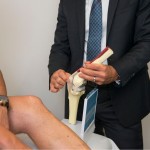
With winter on its way, we are expecting an increase of joint pain from our patients. Scientists aren’t exactly sure why this is common in colder months, but studies have found that every 10 degree drop in temperature corresponded with an incremental increase in arthritis pain. Different factors have been examined including temperature, humidity, barometric pressure and exposure to sunshine, as well as patient habits and behaviours including diet, exercise and overall health. As pain thresholds vary from patient to patient, measurements tend to be subjective. One theory suggests that the change in barometric (or atmospheric) pressure affects the gases and fluids inside our joints, causing the tissues in our body to expand thus increasing the pressure on our nerves and joints.
What other factors determine the severity of arthritis?
Aside from cooler weather, there are several other factors which determine the amount of joint pain a patient may feel. Previous injuries or trauma, your age, genetics, weight and level of physical activity all contribute to the severity of arthritis pain.
Tips on how to help prevent and reduce arthritis pain
- Making sure to wear warm dry clothes during colder months is an easy and effective way to reduce increased joint pain. Be sure to focus on areas which lose the most heat, such as your head, hands and feet. Using items such as beanies, scarfs, gloves and thick warm socks will help keep the heat in and the dampness out.
- As we also tend to become less active during winter, it is theorised that our joints could become more stiff and tight compared to warmer times of the year. Planning some light physical activities such as walking and swimming indoors, stretching, or yoga could help keep you moving and ease any joint pain.
- Hot and cold treatments have proven to be very beneficial in managing arthritis pain in the joints. Take long warm showers and baths to help ease your joint stiffness and the use of hot packs is also beneficial. Cold therapy after exercise can also reduce inflammation, swelling, and pain.
- You may have heard that certain types of food can have positive impacts on helping manage joint inflammation and pain. Research suggests introducing foods rich in omega-3 fatty acids on a regular basis such as fish (tuna, salmon, trout, mackerel etc.) and a variety of vegetables (broccoli, kale, cabbage, cauliflower, brussel sprouts etc.) can keep your joints healthy.
- Managing your weight can also help reduce the amount of pressure distributed across your joints. Losing just 5 – 10kg through adopting an active lifestyle suited to your needs and lifestyle can significantly improve the symptoms of arthritis.
If the cold weather is impacting your arthritis more than usual, there are some other medicines and treatments available to help manage the pain. Get in contact with Dr Shidiak’s team today on 02 9806 3333 to arrange a consultation.


